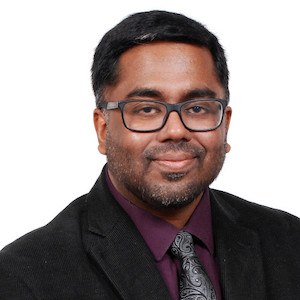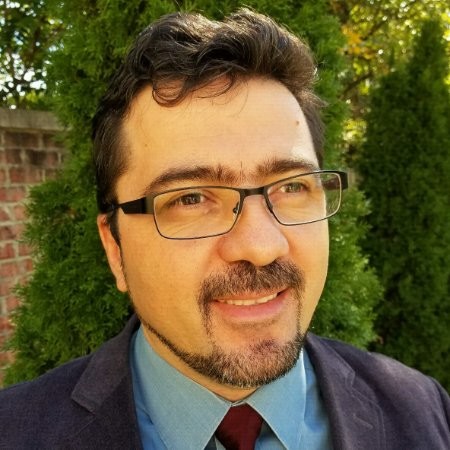News
Sure Strategies for Improving Health and Education: 2020 and Beyond
 Our paths cross as we enter a new decade and consider the next ten years can lead to marked improvements in healthcare delivery - something sorely needed but doable. To that end, we've identified three key developments that can and should be implemented. These are not the only needed improvements and avenues to be pursued; that would take a book or a longer article. So, we've focused on what are, for us, three of the most innovative possibilities. One added word: some of the three innovations or aspects of them may strike readers as fanciful or imaginary or over-the-proverbial-top. But, the speed with which technology is changing, the pressing need for solutions and our capacities to consider new paradigms for solving old problems are converging.
Our paths cross as we enter a new decade and consider the next ten years can lead to marked improvements in healthcare delivery - something sorely needed but doable. To that end, we've identified three key developments that can and should be implemented. These are not the only needed improvements and avenues to be pursued; that would take a book or a longer article. So, we've focused on what are, for us, three of the most innovative possibilities. One added word: some of the three innovations or aspects of them may strike readers as fanciful or imaginary or over-the-proverbial-top. But, the speed with which technology is changing, the pressing need for solutions and our capacities to consider new paradigms for solving old problems are converging.
- Login to post comments
- Feature Story
How The VA and UL Created an Orchestrated Approach to Healthcare Cybersecurity Assurance
 In today's high-risk Internet of Medical Things (IoMT) and cyber-warfare environment, one tool or individual line of cybersecurity solutions would likely not be able to satisfy the requirements for security and safety put forth by an HDO; hence, the aggregation of solutions branded as MedFusion was derived. The VA UL CRADA discovered that healthcare is strengthened in terms of security and safety of connectable medical devices through in-depth cybersecurity defense...Learning from the VA and UL cybersecurity research results, with respect to product-level management of vulnerabilities and threats to medical devices and their associated software algorithms, we can impact the quality of adoption of electronic health records and other data collection systems connected to the IoMT and consumers...
In today's high-risk Internet of Medical Things (IoMT) and cyber-warfare environment, one tool or individual line of cybersecurity solutions would likely not be able to satisfy the requirements for security and safety put forth by an HDO; hence, the aggregation of solutions branded as MedFusion was derived. The VA UL CRADA discovered that healthcare is strengthened in terms of security and safety of connectable medical devices through in-depth cybersecurity defense...Learning from the VA and UL cybersecurity research results, with respect to product-level management of vulnerabilities and threats to medical devices and their associated software algorithms, we can impact the quality of adoption of electronic health records and other data collection systems connected to the IoMT and consumers...
- Login to post comments
- News
The Current State of Blockchain and Where it's Going
 In an earlier post, Blockchain evolution: A quick guide and why open source is at the heart of it, I discussed the first generations of blockchains: the public Bitcoin and cryptocurrency blockchains, followed by the Ethereum blockchain capable of executing programs ("smart contracts"), leading to permissioned versions of code-executing blockchains (e.g., Hyperledger Fabric, Quorum). Let's step back into the blockchain jungle and take a look at the current state of the ecosystem and the projects trying to solve some of the limitations of blockchain technology: speed and throughput, cross-blockchain information and value exchange, governance, and identity and account management.
In an earlier post, Blockchain evolution: A quick guide and why open source is at the heart of it, I discussed the first generations of blockchains: the public Bitcoin and cryptocurrency blockchains, followed by the Ethereum blockchain capable of executing programs ("smart contracts"), leading to permissioned versions of code-executing blockchains (e.g., Hyperledger Fabric, Quorum). Let's step back into the blockchain jungle and take a look at the current state of the ecosystem and the projects trying to solve some of the limitations of blockchain technology: speed and throughput, cross-blockchain information and value exchange, governance, and identity and account management.
- Login to post comments
- News
What Are We Prepared to Do in the United States to Save Primary Care?
 I propose two significant changes to help make primary care relevant in the 21st century...I wrote a longer piece on [Virtual Care] earlier in the year. In short, it's a disgrace that we've put so many hurdles on telemedicine, and that it continues to be so underused. It is widely available in health plans, but rarely practiced by physicians nor by patients. Instead, we still mostly go to our doctors offices, to ERs, or perhaps now to drugstores.A televisit should be the first course of action for non-emergencies. We must remove regulatory and reimbursement barriers, and incent patients to take advantage of the speed and convenience of the option. Moreover, as AI options for diagnoses and advice quickly become more viable, we can use them to triage our needs, help assure continuity with physicians, and eventually reduce the need to talk to a human...
I propose two significant changes to help make primary care relevant in the 21st century...I wrote a longer piece on [Virtual Care] earlier in the year. In short, it's a disgrace that we've put so many hurdles on telemedicine, and that it continues to be so underused. It is widely available in health plans, but rarely practiced by physicians nor by patients. Instead, we still mostly go to our doctors offices, to ERs, or perhaps now to drugstores.A televisit should be the first course of action for non-emergencies. We must remove regulatory and reimbursement barriers, and incent patients to take advantage of the speed and convenience of the option. Moreover, as AI options for diagnoses and advice quickly become more viable, we can use them to triage our needs, help assure continuity with physicians, and eventually reduce the need to talk to a human...
- Login to post comments
- News
The Community-Led Renaissance of Open Source
 In a revival and expansion of the principles that drove the first generation of community-led open source commercial players, creators are now coming together in a new form of collaboration. Rather than withholding software under a different license, they're partnering with each other to provide the same kinds of professional assurances that companies such as Red Hat discovered were necessary back in the day, but for the thousands of discrete components that make up the modern development platform. Today's generation of entrepreneurial open source creators is leaving behind the scarcity mindset that bore open core and its brethren. Instead, they're advancing an optimistic, additive, and still practical model that adds missing commercial value on top of raw open source.
In a revival and expansion of the principles that drove the first generation of community-led open source commercial players, creators are now coming together in a new form of collaboration. Rather than withholding software under a different license, they're partnering with each other to provide the same kinds of professional assurances that companies such as Red Hat discovered were necessary back in the day, but for the thousands of discrete components that make up the modern development platform. Today's generation of entrepreneurial open source creators is leaving behind the scarcity mindset that bore open core and its brethren. Instead, they're advancing an optimistic, additive, and still practical model that adds missing commercial value on top of raw open source.
- Login to post comments
- News
How DoD Plans to Leverage Artificial Intelligence and Open Source to Improve Emergency Response and Disaster Relief
 Some might not know it, but the US military plays a key role in US disaster response strategy and, accordingly, the Department of Defense (DoD) has prioritized its disaster response mission and is investing heavily towards increasing its capabilities and effectiveness. Technology is a big part of all modern DoD missions, and disaster response is no different. The most promising and transformative technology on the horizon for our future, and for the future of the DoD, is Artificial Intelligence (AI). So how exactly will the DoD leverage Artificial Intelligence technologies in order to meet the demands of the disaster response mission? Is a new Center of Excellence created by DoD, called the Joint Artificial Intelligence Center (JAIC). Read More »
Some might not know it, but the US military plays a key role in US disaster response strategy and, accordingly, the Department of Defense (DoD) has prioritized its disaster response mission and is investing heavily towards increasing its capabilities and effectiveness. Technology is a big part of all modern DoD missions, and disaster response is no different. The most promising and transformative technology on the horizon for our future, and for the future of the DoD, is Artificial Intelligence (AI). So how exactly will the DoD leverage Artificial Intelligence technologies in order to meet the demands of the disaster response mission? Is a new Center of Excellence created by DoD, called the Joint Artificial Intelligence Center (JAIC). Read More »
- Login to post comments
- Feature Story
Transforming Health Care Through A 360-Degree View Of Data
 How medical care can be substantially improved through a full spectrum view of all factors that affect health was the topic of Payam Etminani's presentation at the 2019 IDGA Veterans Benefits Conference in Washington D.C. Etminani, the CEO of Bitscopic, argued that the ability to view all health data including social, environmental and genomic information in addition to the traditional clinical measures (vital signs, blood work, history of illness etc), would lead to significant improvement in care. Etminani described how recent advances in Big Data and Artificial Intelligence (AI) make combining and using these large and widely varied sets of information possible. Read More »
How medical care can be substantially improved through a full spectrum view of all factors that affect health was the topic of Payam Etminani's presentation at the 2019 IDGA Veterans Benefits Conference in Washington D.C. Etminani, the CEO of Bitscopic, argued that the ability to view all health data including social, environmental and genomic information in addition to the traditional clinical measures (vital signs, blood work, history of illness etc), would lead to significant improvement in care. Etminani described how recent advances in Big Data and Artificial Intelligence (AI) make combining and using these large and widely varied sets of information possible. Read More »
- Login to post comments
- News
Major Interoperability Initiative Launched During the Annual Meeting of The Sequoia Project
 On December 5, 2019, HLN Consulting, LLC participated in The Sequoia Project's day long annual meeting which was held just outside of Washington, D.C. at the Gaylord National Resort & Convention Center. As a leading healthcare informatics consulting company HLN monitors developments in healthcare interoperability nationally with particular emphasis on the impact to public health agencies and their stakeholders. This conference represented a good opportunity to participate in the start of a major interoperability initiative that will play out over the next several years. In addition to this report, the Sequoia Project posted the proceedings of the meeting online, including the recorded discussions as well as the slides from the presentations. Read More »
On December 5, 2019, HLN Consulting, LLC participated in The Sequoia Project's day long annual meeting which was held just outside of Washington, D.C. at the Gaylord National Resort & Convention Center. As a leading healthcare informatics consulting company HLN monitors developments in healthcare interoperability nationally with particular emphasis on the impact to public health agencies and their stakeholders. This conference represented a good opportunity to participate in the start of a major interoperability initiative that will play out over the next several years. In addition to this report, the Sequoia Project posted the proceedings of the meeting online, including the recorded discussions as well as the slides from the presentations. Read More »
- Login to post comments
- Feature Story
A Perspective of Open Source Licensing Models for the Health Care Industry
 Recently, I've had several interesting conversations about how business models based on open source technologies apply to the healthcare industry. While a lot has been written on the subject, I aim to provide a concise summary and some of my personal perspectives on the matter. This article discusses the definition of open source technology and licensing models; a second article will discuss governance models and applications in healthcare...In reality, it's hard to talk about open source licensing without talking about intellectual property (IP) and copyright. Copyright sums up the rights and obligations that the rightful owner associates with the work. The license describes the rights and obligations of any and everyone else, and can be as broad or as limited as the owner chooses.
Recently, I've had several interesting conversations about how business models based on open source technologies apply to the healthcare industry. While a lot has been written on the subject, I aim to provide a concise summary and some of my personal perspectives on the matter. This article discusses the definition of open source technology and licensing models; a second article will discuss governance models and applications in healthcare...In reality, it's hard to talk about open source licensing without talking about intellectual property (IP) and copyright. Copyright sums up the rights and obligations that the rightful owner associates with the work. The license describes the rights and obligations of any and everyone else, and can be as broad or as limited as the owner chooses.
- Login to post comments
- Feature Story
Let's Place Some Big Bets - Reinventing Medical Care
 When we think about market research and Big Data, think about Henry Ford's (possibly apocryphal) quote: Most of our healthcare innovations and reforms take the existing healthcare system as a given and try to build upon it in some way. They add more on-ramps to the healthcare superhighway, widen its lanes, try to smooth the pavements, maybe even automate our driving on it. But sometimes we need to tear the highway down. Here, in brief, are some big bets I'd like to see someone take on...
When we think about market research and Big Data, think about Henry Ford's (possibly apocryphal) quote: Most of our healthcare innovations and reforms take the existing healthcare system as a given and try to build upon it in some way. They add more on-ramps to the healthcare superhighway, widen its lanes, try to smooth the pavements, maybe even automate our driving on it. But sometimes we need to tear the highway down. Here, in brief, are some big bets I'd like to see someone take on...
- Login to post comments
- News